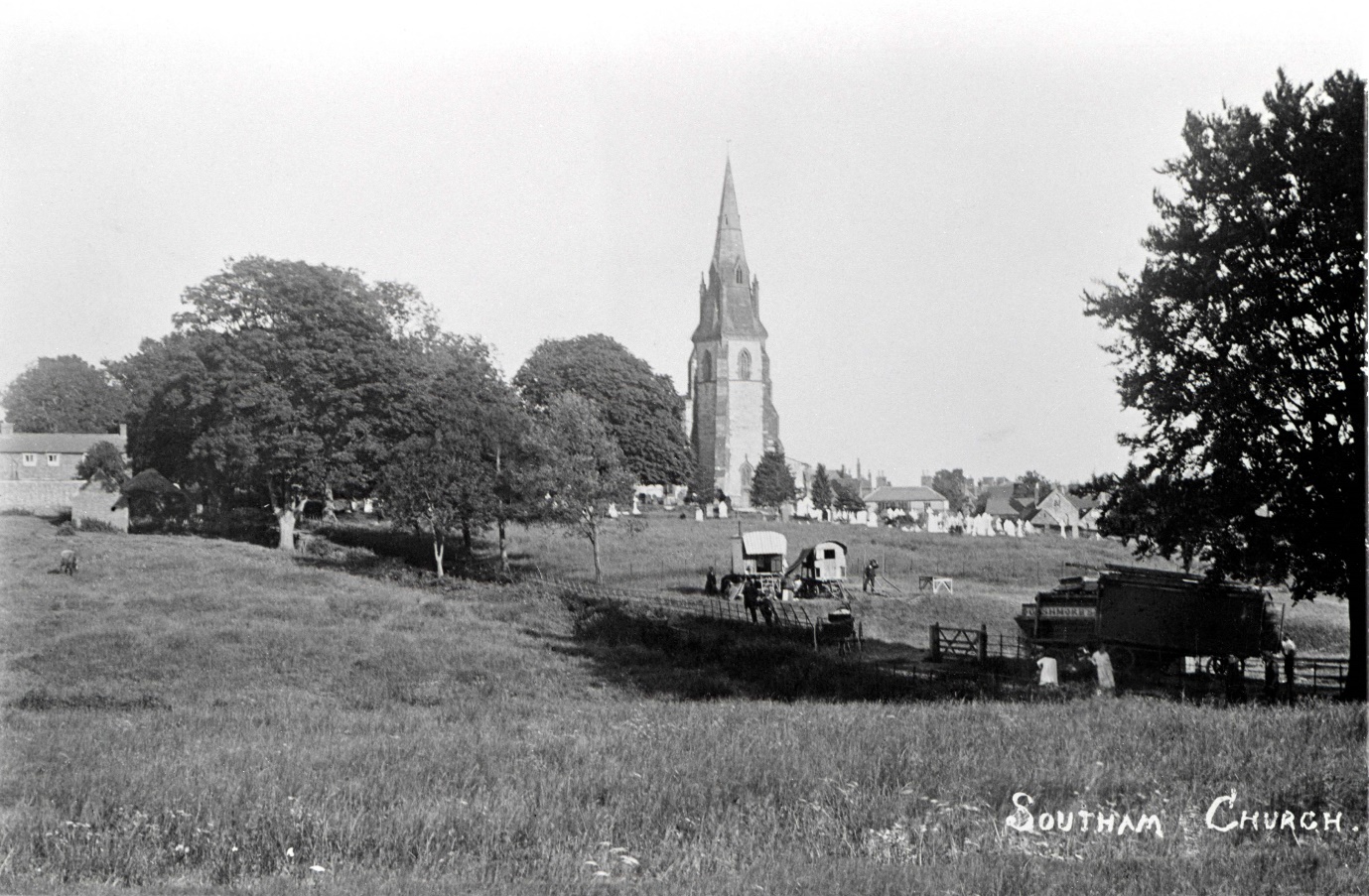CARDALL’S CORNER – The Bells of St James – January 2017
By Robert Sherriff
The following article by one of our members who is also a bellringer, gives us an insight into the workings of the bell tower of St James Church and the history of the bells themselves.
There are eight bells in St James Church bell tower and they sit in a double deck steel “H” frame, donated by the Oldham Family in 1913 to accommodate the two extra bells added later that year. The current octave is in the key of “F” and although they sound a good match they originate from five different foundries over a span of 298 years.
A bell of this type is made of a Copper/Tin alloy in approximately 80/20 proportions, this being the formula used throughout the history of bell founding. There are still two specialist bell foundries in England, one in Loughborough and one at Whitechapel, London, (although the future of the latter is currently in doubt). Both will open their doors to interested parties. In addition to the bell itself, there is a cast iron headstock to hold it in place, an iron clapper to strike the bell, a wooden wheel larger than the bell to give good leverage for the ringer, and the bell rope which in the case of Southam is roughly 70 feet long.
The bells sit high in the 14th Century tower, above the clock room, with a further drop down to the ground floor ringing chamber, or belfry. The lightest bell is the Treble and the heaviest is the Tenor. The other six are referred to by their positions between these two: Second, Third, Fourth, Fifth, Sixth & Seventh. The weight of the Treble bell is 4cwt 0qt 23lbs (213kgs) whilst the Tenor is 15cwt 1qt 25lbs (762kgs). The combined weight of all the bells totals 3,020 kilograms. This means that with the weight of the frame, headstocks, clappers, wheels and fittings the tower supports a gross weight of over 5 tons.
The oldest bell is the sixth being cast by Watts of Leicester in 1615. The third dated back to 1596 but was recast in 1863 by the George Mears London foundry along with the fourth and fifth. All three of these bells are inscribed with the dedication: “Albert Edward Prince of Wales and Alexandra Princess of Denmark married March 10 1863”. They became King and Queen 38 years later upon the death of Queen Victoria. The Treble and Second are by John Taylor of Loughborough, the Seventh is by John Martin of Worcester in1650, and the Tenor is by Henry Bagley I of Chacombe in 1676.
In 1641 when King Charles visited Southam at the start of the English Civil Wars, the ringers failed to ring to announce the King’s arrival. The Churchwarden’s accounts for that year show these two entries: “Paid to the King’s footmen who sealed up the Church doors for not ringing when the King came to town 6s-8d” (33p). “Paid also to them for not ringing when the King went out of the town 5s” (25p).
The bells are rung regularly for Sunday services, Tuesday practice, weddings and occasional special occasions, such as for the Battle of Southam re-enactment event in August 2013.
First published in the District Advertiser, Southam edition January 2017.


Leave A Comment